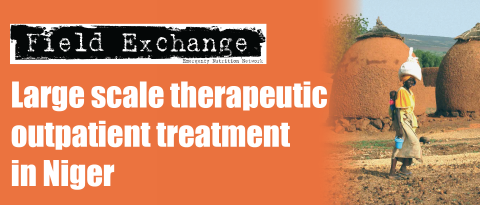Iron and vitamin A deficiency in African refugees
Summary of published research1

Haemacue survey in Tanzania
Five cross-sectional surveys were conducted in refugee camps in north and east Africa between 2000-2002 to assess the level of iron deficiency anaemia and vitamin A deficiency in populations dependent on long-term international food aid and humanitarian assistance. Although there has been much information on micronutrient deficiency outbreaks like scurvy, pellagra and beri-beri amongst refugees, there has been very little information published on the prevalence of the more widely prevalent deficiencies of iron, vitamin A and iodine.
Although there were various methodological issues around interpretation of the findings, e.g. issues of age recall may affect estimates of age-specific anaemia while recall bias may have affected estimates of vitamin A capsule coverage, the overall findings give enormous cause for concern.
Study findings
The prevalence of anaemia in children [haemoglobin (Hb) <110 g/L] was high, with >60% affected in 3 of five camps. Iron deficiency [serum transferring receptor (sTfR) >8.5 mg/L] was also high, ranging from 23 to 75% (this measure is used to assess iron deficiency because it is relatively unaffected by the acute phase response associated with inflammation and infection). There was also a strong ecological correlation between the prevalence of iron deficiency and anaemia among different camps. Although children were more affected, anaemia was also a public health problem in adolescents and women. While the prevalence of anaemia in the worst affected camps compares with findings from other refugee studies, i.e. in Burmese and Somali refugee children, the levels constitute a serious public health issue.
Mean serum retinol in children, after adjustment for infection status, ranged from 0.72 to 0.88 +/- 0.2 ?mol/L in the four camps assessed and vitamin A deficiency (<0.7 ?mol/L) was present at levels ranging from 20.5% to 61.7%. These findings compare unfavourably with recent national vitamin A deficiency prevalence estimates for eastern and southern Africa of 20-37.1%. In areas where vitamin A capsule distribution programmes were in effect, coverage ranged from 3.5% up to 66.2%.
The World Health Organisation (WHO) classification of micronutrient deficiency prevalence states, that a prevalence of 40% anaemia or 20% vitamin A deficiency comprises a substantial public health problem. The findings therefore demonstrate the inadequacies of current policies and practice in addressing micronutrient malnutrition in populations largely dependent on food aid. The persistence of these public health problems also contravenes agreed minimum standards in disaster relief.
Food aid rations received by the inhabitants of the surveyed camps vary over time but typically consist of a cereal, pulses, oil and salt. The micronutrient composition of rations for food aiddependent populations has been subject to criticism for some years and has been implicated as a major factor in frequent micronutrient deficiency outbreaks. Efforts to tackle the problems identified in this paper are currently ongoing, with the recent publication of new policy papers on emergency food aid and fortification by the World Food Programme (WFP) and its active revision of food aid specifications.
The authors of the study conclude that further work should adopt a holistic public health nutrition approach linking effective fortification of food aid commodities, combined with supplementation of high risk groups where feasible and acceptable, promotion of recommended infant and young child feeding practices, pursuit of opportunities to facilitate refugee income generation, dietary diversification, and ensuring effective vector and parasite control.
1Seal. A et al (2006). Iron and Vitamin A deficiency in long-term African Refugees. Pp 808-813
Imported from FEX website


